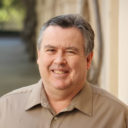Take Up and Read: The Dictionary of Cultural Literacy
This current blog series on Reflections is intended to encourage Christians to read more vigorously by providing a beginner’s guide to some of the Christian classics in such fields as theology, philosophy, and apologetics. My hope is that these brief introductions to important Christian texts will motivate today’s believers to, as St. Augustine put it, “take up and read” (Latin: Tolle lege) these classic books.

This week’s book is not a Christian classic but rather a contemporary one on the basic knowledge that makes a person culturally literate. The Dictionary of Cultural Literacy, compiled initially by educator E. D. Hirsch Jr., is a reference for what Americans need to know to be educated individuals and knowledgeable citizens. This dictionary is a great resource for Christians who want to pursue the life of the mind and thus deepen their general knowledge and overall education.
Why Is This Author Notable?
E. D. Hirsch Jr., the initial compiler and editor of this volume, is professor emeritus of education and humanities at the University of Virginia. He is also the founder of the Core Knowledge Foundation and is the author of several respected books on reforming education in America. Subsequent editions of the dictionary include editors and authors Joseph F. Kett and James Trefil. Kett serves as a professor of history at the University of Virginia, and Trefil is a professor of physics at George Mason University.
What Is This Book About?
The Dictionary of Cultural Literacy contains the core body of information that, according to the editors, all Americans need to know to be culturally literate persons.1 The more than 600-page dictionary concisely presents the major people, places, ideas, and events that shape cultural conversation. The work includes 23 sections that cover virtually every major area of human knowledge, including the Bible, literature, philosophy, religion, fine arts, history, politics, geography, science, social science, medicine, and technology. With some six thousand entries, each topic is covered succinctly in a paragraph or two. The volume also includes a couple hundred maps, charts, and illustrations to help convey important information.
Below, the editors of the dictionary briefly describe the importance of cultural literacy:
Although it is true that no two humans know exactly the same things, they often have a great deal of knowledge in common. To a large extent this common knowledge or collective memory allows people to communicate, to work together, and to live together. It forms the basis for communities, and if it is shared by enough people, it is a distinguishing characteristic of a national culture.2
Why Is This Book Worth Reading?
The Dictionary of Cultural Literacy is a national bestseller. It contains a wealth of knowledge that if read and studied, would certainly revolutionize the mind of the reader. The work can be used as a dictionary where specific topics are individually consulted, but it can also be read through systematically for those who want to expand their general knowledge. This volume should be in every school, church, and family library. Read it and grow in knowledge and wisdom.
Endnotes
- According to Wikipedia, “cultural literacy is a term coined by E. D. Hirsch, referring to the ability to understand and participate fluently in a given culture.” Wikipedia, s.v. “cultural literacy,” last modified January 15, 2018, 21:41, https://en.wikipedia.org/wiki/Cultural_literacy.
- E. D. Hirsch Jr., Joseph F. Kett, and James Trefil, eds., The Dictionary of Cultural Literacy: What Every American Needs to Know, 2nd ed. (Boston: Houghton Mifflin, 1993).






